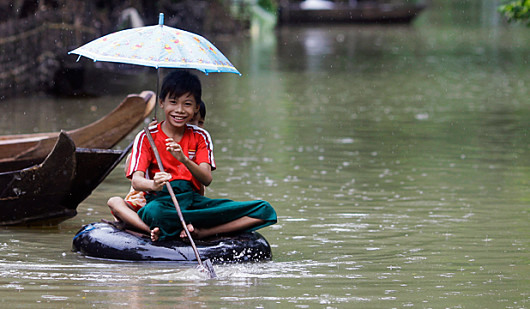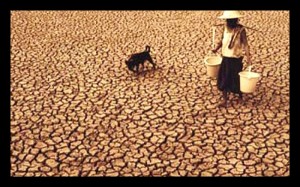 In September 2023, the Libya Floods inflicted a devastating event upon Derna. Derna is an eastern Libyan port city housing approximately 100,000 residents. Storm Daniel, categorized as a “medicane,” or a tropical cyclone, nourished by the warm Mediterranean waters, wreaked havoc and triggered extensive flooding. The impact of this storm has been catastrophic for the people of Libya.
In September 2023, the Libya Floods inflicted a devastating event upon Derna. Derna is an eastern Libyan port city housing approximately 100,000 residents. Storm Daniel, categorized as a “medicane,” or a tropical cyclone, nourished by the warm Mediterranean waters, wreaked havoc and triggered extensive flooding. The impact of this storm has been catastrophic for the people of Libya.
Presently, the death toll stands at 11,300, primarily concentrated in Derna, with an additional 170 fatalities recorded in neighboring areas within the Al Akhdar and Al Marj districts. The report reveals that more than 10,100 people are missing, and the continuous flood has caused 25,000 citizens to lose their homes.
Why Did This Happen?
Storm Daniel hit the Mediterranean, causing heavy rains and then moving south to Libya on September 10, 2023. Libya is a predominantly arid country, rarely receiving substantial rainfall. The downpour released around 400mm of rain onto Derna in only 24 hours, a city that usually only takes 540mm annually. Due to this unusual climate event, the region’s infrastructure struggled to manage all the excess water from the flooding.
Another contributing factor is the poor drainage systems in Libya. The lack of effective drainage infrastructure due to poor maintenance of the two dams, which collapsed, only exacerbated the flooding. Additionally, as the city has become more urbanized, which has reduced natural drainage areas, the rainwater has fewer places to infiltrate the ground.
Impact on Communities
The effects of the floods will have devastating long-term consequences for the citizens of Libya. The economic implications of the flooding are astronomical. The destruction of infrastructure, including roads, bridges and utilities, has disrupted transportation networks and hindered the movement of goods and people, impacting trade and commerce. Extensive damage has forced many businesses to shut down temporarily, causing financial losses and job insecurity for the local workforce. The cost of repairing and rebuilding damaged infrastructure is substantial and strains government resources.
UNICEF has reported that the floods have displaced 43,059 people, including more than 16,000 children, from their homes. Those who cannot find accommodation with relatives are currently provided shelter in schools. Other citizens find themselves stranded in their residences, facing critical shortages of electricity and clean water. Concurrently, a significant portion of the population is heading eastward to Benghazi as they seek safety from the devastating effects of the flooding.
The spread of water-borne diseases is an additional threat. Exposed sewage leaking into the water systems has rendered the water too hazardous for consumption. Stagnant floodwaters create breeding grounds for waterborne diseases such as cholera and dysentery. These breeding grounds can quickly spread in overcrowded temporary shelters and communities lacking access to clean water and sanitation facilities. Evidence of this is already apparent, with 55 children being ill from the contaminated water.
Government Response
In response to the Libya floods, government authorities are actively investigating the contributing factors, ensuring they evaluate the effectiveness of existing drainage systems and disaster preparedness measures. In parallel, authorities are scrutinizing the Water Resources Authority and the Dams Management Authority over allegations of negligence.
Eight current and former officials have been apprehended, pending further investigation into their involvement in the recent flood catastrophe. After the Libya floods, authorities dismissed Derna Mayor Abdulmenam al-Ghaithi and subjected him to questioning. After the Libya floods, authorities apprehended eight current and former officials for further investigation. General Prosecutor Al-Siddiq Al-Sour stated, “The eight former and current officials have failed to provide evidence that would absolve them from potential charges, leading prosecutors to order their detention until the investigation reaches its conclusion.”
Environmental Consequences
The environmental impacts in Libya played a pivotal role in exacerbating the floods. Deforestation and urbanization reduced the land’s natural ability to absorb rainfall, resulting in heightened surface runoff during heavy rains. Poor land management practices, including inadequate soil conservation, exacerbated soil erosion and sediment buildup in waterways.
Climate scientists at the World Weather Attribution Group found that 50% more rain had fallen from Storm Daniel due to human-caused greenhouse gas emissions. Further research also concluded that flooding was ten times more likely to happen due to climate change.
International Support and NGOs
Government authorities and humanitarian organizations have jointly launched extensive relief efforts in response to the Libya floods. Several United Nations humanitarian agencies, including UNICEF (United Nations Children’s Fund), UNHCR (United Nations High Commissioner for Refugees), WFP (World Food Programme), WHO (World Health Organization) and IOM (International Organization for Migration), have actively engaged in on-the-ground support operations.
The United Kingdom has significantly bolstered its life-saving assistance to Libya by earmarking a substantial £1 million aid package. UK-MED, an NGO, has been responsible for conducting quick medical evaluations. In tandem with the U.K.’s efforts, the European Union has committed 94.5 million euros for humanitarian aid and an additional 5.7 million euros in emergency allocations. This international support addresses immediate needs and reinforces Libya’s long-term capacity to cope.
Long-Term Solutions
Implementing long-term solutions is imperative in the aftermath of the devastating flooding in Libya. Developing robust floodplain management strategies to prevent encroachments into flood-prone areas is essential to enhance resilience and reduce future risks.
Investing in improved drainage systems and sustainable urban planning will also be crucial to addressing flood vulnerability. Afforestation and reforestation initiatives can help restore the natural water-absorbing capacities of the land. Climate change adaptation strategies, such as early warning systems and disaster preparedness plans, should be established to anticipate and respond to extreme weather events. Furthermore, sustainable land and water resource management practices and stricter regulations and enforcement can help safeguard against environmental degradation and pollution.
Regarding the economic fallout from the floods, strategies to help businesses are imperative. The flooding has significantly burdened Libya’s economy and will take time to recover. Collaboration with international organizations and neighboring countries is key to Libya’s recovery.
– Sophie Higham
Photo: Unsplash





